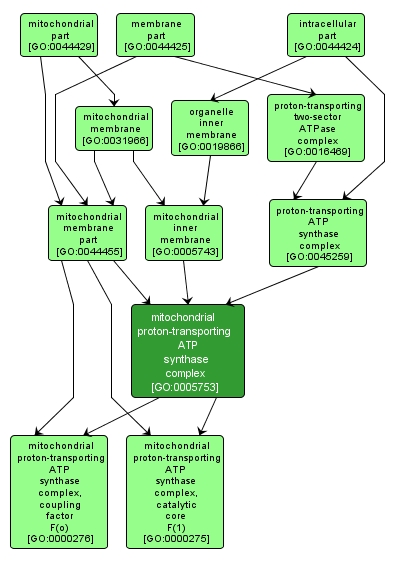GO TERM SUMMARY
|
| Name: |
mitochondrial proton-transporting ATP synthase complex |
| Acc: |
GO:0005753 |
| Aspect: |
Cellular Component |
| Desc: |
A proton-transporting ATP synthase complex found in the mitochondrial membrane. |
Synonyms:
- mitochondrial respiratory chain complex V
- GO:0016470
|
|

|
INTERACTIVE GO GRAPH
|














